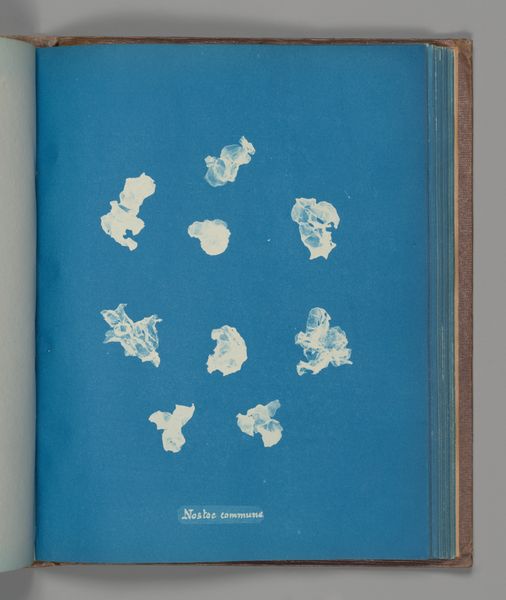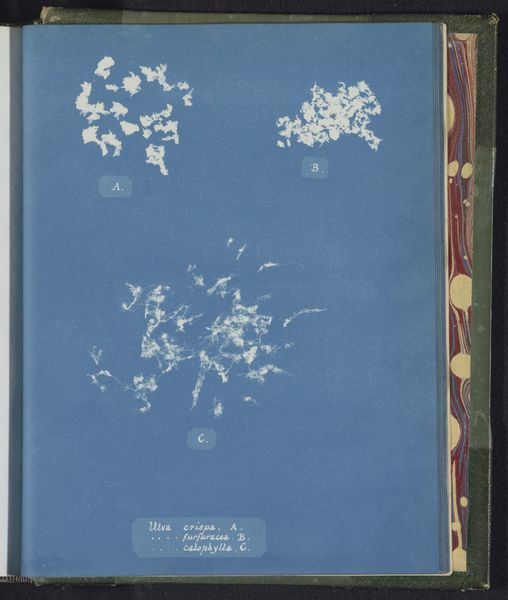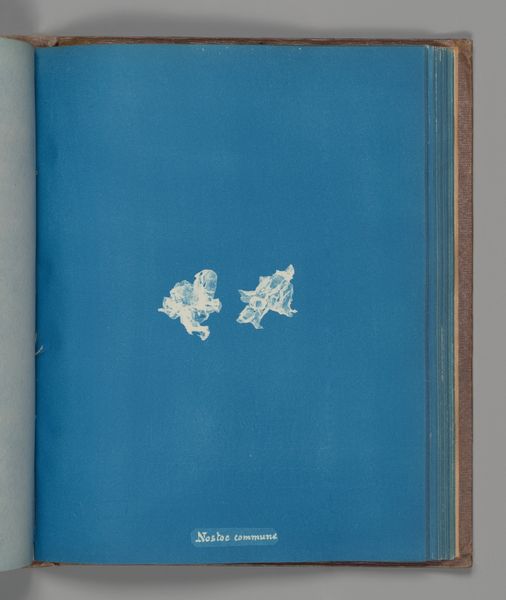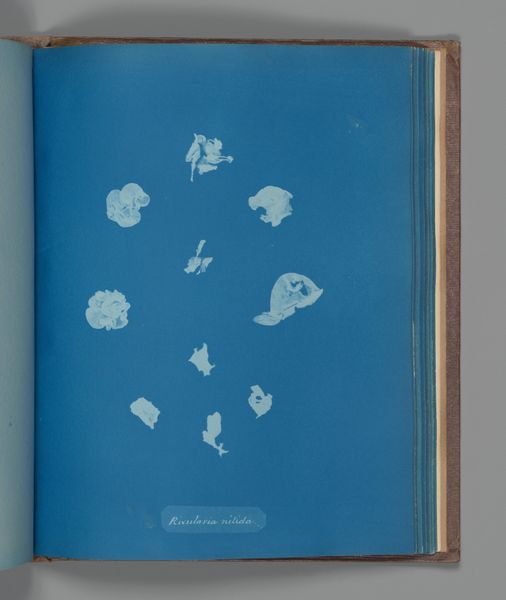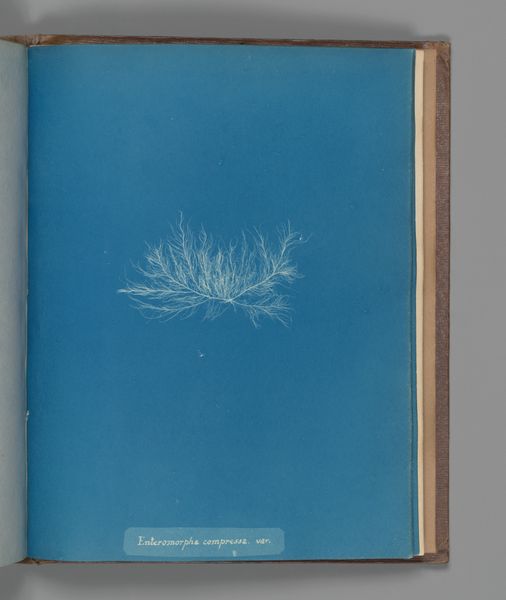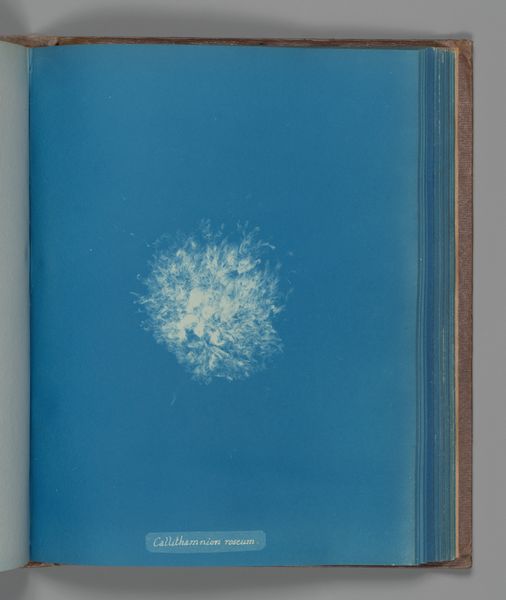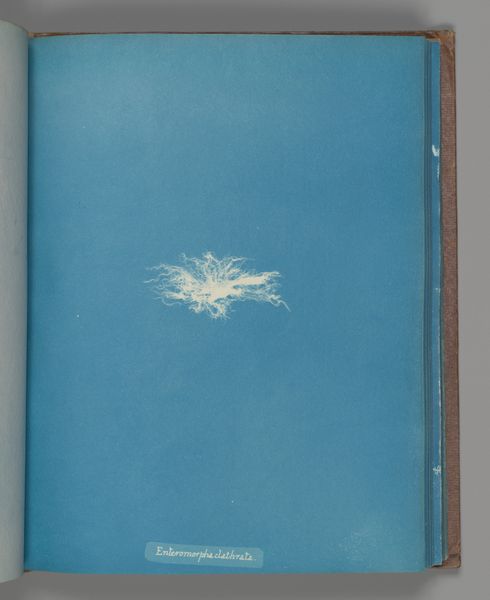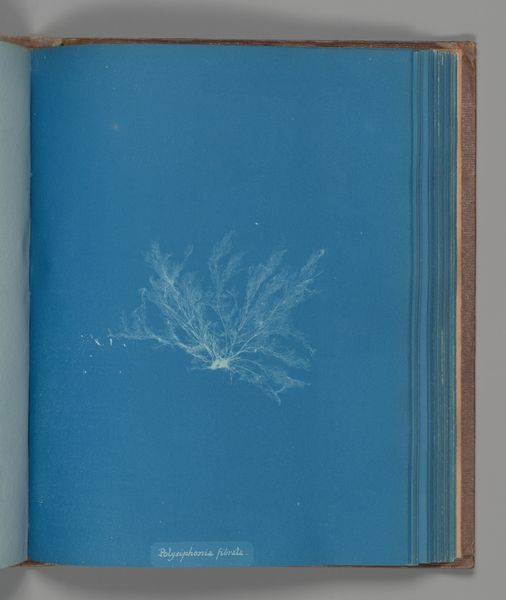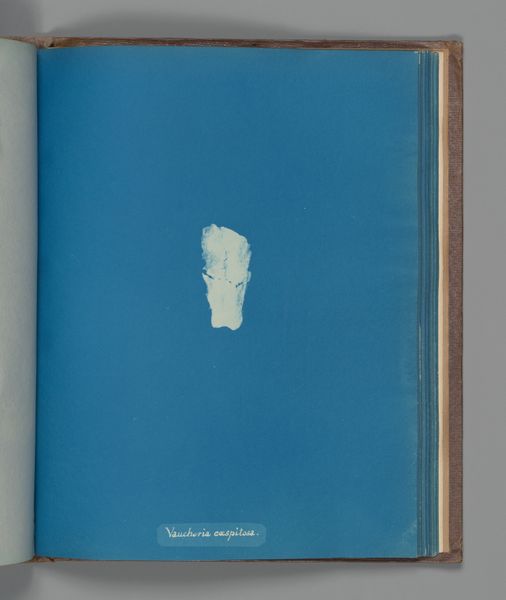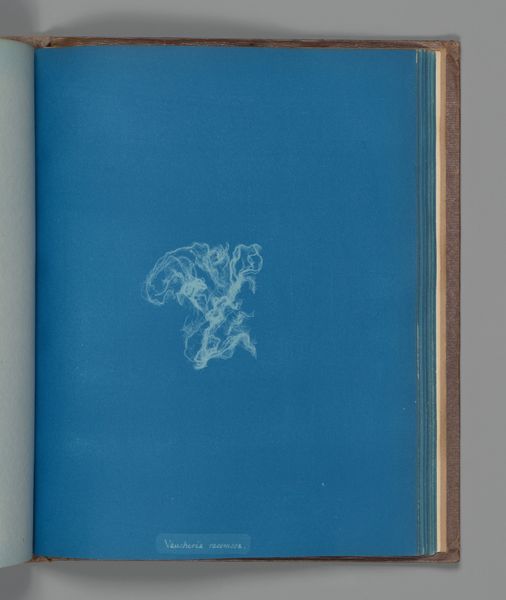
Ulva crispa, A. Ulva furfuracea, B. Ulva calophylla, C. 1851 - 1855
0:00
0:00
photogram, cyanotype, photography
#
photogram
#
cyanotype
#
photography
Dimensions: Image: 25.3 x 20 cm (9 15/16 x 7 7/8 in.)
Copyright: Public Domain
Curator: This intriguing work is a photogram created through the cyanotype process. It's entitled "Ulva crispa, A. Ulva furfuracea, B. Ulva calophylla, C." and was created between 1851 and 1855 by Anna Atkins. You can currently find it at the Metropolitan Museum of Art. Editor: My first impression is of scientific illustration imbued with something profoundly poetic. The delicate white seaweed shapes against that vibrant cyan hue evokes the mysteries of the ocean depths, and invites feelings of serene contemplation. Curator: That poetry resonates deeply with the radical potential of Atkins’ endeavor. As one of the earliest women photographers, she was working in a field dominated by men. Her use of photography wasn't simply documentation; it was about asserting a female voice in the scientific discourse of her time, and visualizing knowledge production through a feminist lens. Editor: The stark contrast enhances that sense of assertion you’re mentioning. The silhouettes of the algae forms remind me of constellation maps, giving this scientific record a subtle cosmic quality. I find this evocative relationship with astronomy strangely hopeful. Curator: Absolutely. Think about how her project challenged the very idea of objective representation, even back then. By directly imprinting the algae onto the light-sensitive paper, she eliminated the intermediary step of the artist’s hand in drawing or painting, in order to claim greater accuracy to nature, even while relying on a relatively new medium with so much scientific mystery to it. She asks about authorship. Editor: It makes me consider how photography can hold multiple layers of meaning – documentation, art, symbol – and how intertwined those have become. I leave this cyanotype wondering if it’s less a map of seaweed and more a symbol for nature's imprint on memory and light. Curator: Precisely! Viewing her work today inspires important questions of identity, knowledge production, and gender that resonate now, even if Atkins perhaps didn't anticipate such direct impact during her time. Editor: And for me, that enduring appeal highlights the continued emotional resonance of nature interpreted through symbols and imagery.
Comments
No comments
Be the first to comment and join the conversation on the ultimate creative platform.
